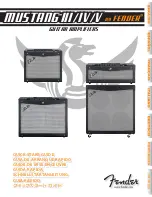
12
MIDI (MUSICAL INSTRUMENT DIGITAL INTERFACE)
Rodgers organs have some of the most advanced MIDI capabilities in the world, offering a great
variety of sound possibilities. These sounds are accessed by the MIDI coupler pistons located on
the piston rails. Two MIDI sounds can be played simultaneously from the Great, Swell and
Pedal divisions.
The MIDI coupler pistons control the following MIDI channels:
Great Manual Channel 1*
MIDI GT A
Great Manual Channel 5
MIDI GT B
Swell Manual Channel 2
MIDI SW A
Swell Manual Channel 6
MIDI SW B
Pedal Manual Channel 3
MIDI PED A
Pedal Manual Channel 7
MIDI PED B
* May be changed to any of the sixteen MIDI channels.
Selecting a MIDI Sound
Selecting a MIDI sound is also known as sending a program change:
1.
Press and hold the SET piston, then press a MIDI coupler piston. The MIDI coupler piston
flashes, indicating a sound selection can be made. This is called the MIDI set mode. The
console display reads:
M I D I G T A C H 1
P G M = 1 2 1 V A R = 0
2.
Select the desired sound (program change) number from the sound module instrument
chart(s) provided with the sound module. Press a key on the Great, Swell or Pedal.
Note: Program changes 1-61 are sent by the Great keys, program changes 62-122 by the Swell
keys, and program changes 123-128 by the Pedal notes. Once the key is pressed, the console
display returns to TRANSPOSER 0.
Previewing Various MIDI Sounds
You may preview a variety of MIDI sounds before making a selection. To listen to various
MIDI sounds:
1.
Press and hold the SET piston, then press a MIDI coupler piston. The MIDI coupler piston
flashes. Continue to hold SET.
2.
By continuing to hold SET, the organ remains in the MIDI Set mode.
3.
Press the key corresponding to the program change number of the desired MIDI sound.
Note: See the sound module instrument chart(s) provided with the sound module.
Summary of Contents for 790C
Page 1: ...i Rodgers 790C Owner s Manual Copyright Rodgers Instruments LLC...
Page 8: ...viii...
Page 34: ......
Page 38: ...1905 799A...
















































